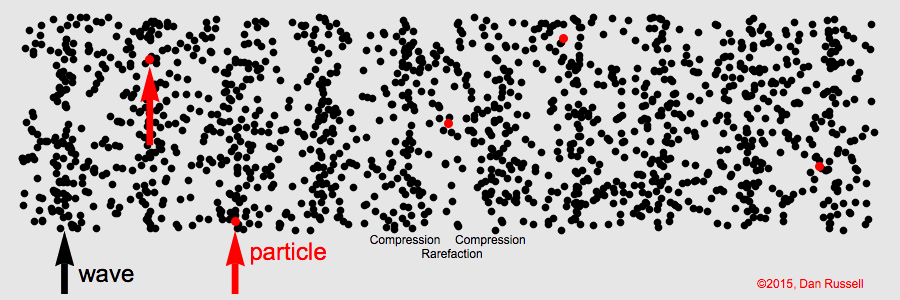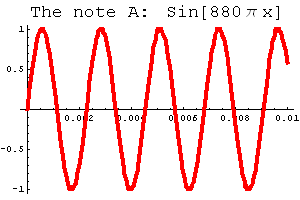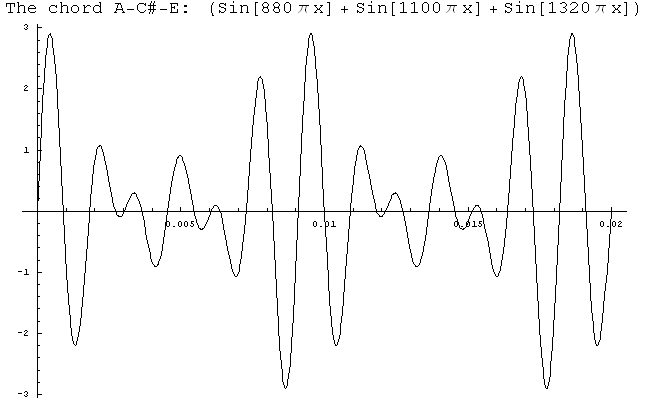Lately, I've been facinated with how we as humans, receive and perceive sound. I soon found myself in a rabbit hole of 10th grade physics and biology.
Understanding sound
The journey of sound starts with a vibration.
When you clap your hands, or snap your fingers - the impact causes a vibration. The air molecules around receive this vibration and then start vibrating themselves. Sound is this vibration travelling through air. The particles don't travel themselves, but the wave travels through space.
 (Source = Acoustics and Vibrations Animations, by Dan Russell)
(Source = Acoustics and Vibrations Animations, by Dan Russell)
You can see the particles are moving back and forth in the same direction as the wave as a whole is moving. Such a wave is called a longitudinal wave. And it's a pressure wave, so there are regions of high pressure (compressions) and low pressure (rarefactions).
This is also why we can't hear anything in outer space. There are no molecules to act as a medium for the sound waves to travel.
The nature of the wave depends on the source of the vibrations. If you have a single frequency sound source (like a single note of an instrument constantly emitted), then you get a simple sine wave. Eg: here's what just the A note (above middle C) would look like.

(Wave images and audio source = Trigonometry in Nature, University of Minnesota )
Similarly, other individual notes their own similar sine waves with their own frequencies. And there's no reason they can't occur together, so let's do that!
Let's take the A major chord (A, C#, E). It has 3 notes, all with their own sine waves. When played together, these waveforms combine to form a new waveform.

The sounds can become more and more complex and there are other factors (like overtones) that can affect sound quality, but the resultant sound wave is fundamentally still a combination of all the constituent vibrations.
How do we hear this?
The crux is that we keep transferring the vibrations from one component to another (Outer ear -> Middle ear -> Inner ear => Brain) - until we're able to convert it to electric signal. The NIH made a really fantastic animated video explaining this process.
The vibrations that were travelling through the air flow into your ear, and reach your ear drum. This is a thin membrane that also starts vibrating.
The vibrating ear drums cause a set of 3 tiny connected bones (Malleus, Incus, Stapes) to start vibrating. These magnify the vibrations and send them on to the Cochlea. This is a snail-like structure that's filled with fluid. When the vibration reaches here, it causes ripples in this fluid.
The surface of the cochlea has hair-cell bundles spread throughout them. So when there's a ripple in the fluid, these bundles also ride these waves. The movement of these hair cell bundles is turned into electrical signals to send to the auditory nerve. Different hair cells respond to different frequencies of the sound. The hair cells near the outer coil of the cochlea detect higher pitched sounds, and the ones at the inner coil detect lower pitched sounds.
How does our brain make sense of these signals?
The next stop for this electrical signal is the thalamus. You can think of this as a post office where all your body's sensors (sight, hearing, touch, taste - but not smell!) send their signals, and it relays the signal appropriately to the auditory part of the cerebral cortex. Here, different neurons respond to different frequencies or other sound attributes, and merge this information together. The brain then interprets these pieces as the sounds we know and love.
Honestly, it's pretty magical that any of this works at all.